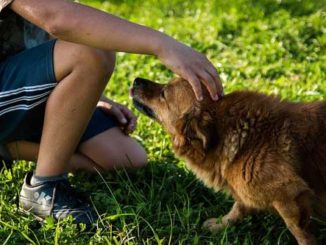In comparison to the last 10 or 20 years, veterinarians are now frequently requested to solve fertility problems in the dog, mainly due to the increased popularity of purebred dogs as well as for sentimental or financial reasons. In fact, breeders may be concerned about different kinds of problems which includes their bitches produce no pups after mating or Artificial Insemination, anoestrus or a low prolificity rate.
Many different problems can lead to infertility including hormonal problems, infectious diseases, congenital or acquired defects of the genital tract. We recommend that veterinarians follow a very strict progression, commencing with the most frequent cause to the most uncommon cause. In the bitch, things become even more difficult when we realize that apparent infertility can be due to very different situations which prove difficult to distinguish, such as lack of fertilization (no union between eggs and sperm) and early embryonic death.
1. Mistimed Breeding
Mistimed breeding represents by far the most common cause of infertility in the bitch. The incidence may vary between 40% to 80% of infertile bitches. Although the following belief has been clearly proved erroneous in approximately 30% of bitches, many breeders are still convinced that a bitch will conceive when mated around the 12th day of the heat period. Actually, it has been clearly demonstrated that a bitch may ovulate as early as the 3rd or 4th day after the onset of pro-oestrus and as late as the 30th day of the heat period. Clinical factors such as the increased swelling of the vulva and the decreasing bleeding of the genital tract at the time of the ovulation period may help veterinarians determine if bitches are obviously mated at a wrong time. But, these criteria are in no way precise enough. Nowadays, numerous available techniques may be utilized to investigate the “optimal time for breeding”: vaginal cytology, endoscopic appearance of vaginal folds and progesterone assays are the most commonly used methods. Ovarian ultrasonography is especially indicated in infertile bitches, as it represents the most accurate way to determine the precise date of ovulation. This method also helps quantify the number of growing follicules as well as follicules undergoing ovulation and as such, it helps to evaluate the fertility potential of the bitch.
2. Male infertility
After mistimed breeding, male infertility is the most common cause of conception failure in bitches presented with infertility.
3. Other causes of Infertility
As it is often ascertained in large animals, we suggest that veterinarians should first consider if infertile bitches show regular inter-oestrus intervals or irregular ovarian cycles.
3.1. Infertility with prolonged interestous intervals
The apparent prolongation of interestrous intervals occurs in dogs with a silent heat, defined as ovarian activity in the absence of overt physical and behavioral changes characteristic of canine estrus. Among the hormonal causes of anoestrus, hypothyroidism, hyperadrenocorticism, hyperprolactinemia, or bitches treated with hormonal compounds such as progestagens, androgens (racing dogs) or anabolic steroid compounds. Ovarian cysts that secrete progesterone may cause prolonged interestrous intervals. The surgical removal of the cyst is often the best solution. Hormonal attempts using prostaglandins are not well documented in bitches. Bitches housed in very bad environmental conditions (including a high concentration of animals, low luminosity, low quality food) may undergo prolonged interestrous intervals.
3.2 Infertility with shortened interestrous intervals:
As it is often ascertained in large animals, we suggest that veterinarians should first consider if infertile bitches show regular inter-oestrus intervals or irregular ovarian cycles.
3.2.1. Ovarian cysts or tumors
It is important to diagnose and remove these hormonally active cysts or tumors as quickly as possible for at least two reasons. First, it is necessary to cure them and try to restore fertility. Second, the secretion of high quantity of estrogens may act on the uterus as a potential towards the cystic endometrial hyperplasia-pyometra complex, but also on the bone marrow in creating progressive non regenerative anemia.
Follicular cysts may be single or multiple; if multiple cysts are present in one ovary, the cysts do not communicate. The ovarian cysts in the bitch may be present in only one or both ovaries. Estradiol assays during the pro-estrus period may be useful for practitioners who do not perform ultrasonography. The patterns of estrogen secretion are often modified. Still, when possible, it is much more valuable to perform ovarian ultrasonography. Follicular cysts appear as focal hypoechoic to anechoic structures, greater than one cm are supposed to be cystic structures. The treatment of choice of ovarian follicular cysts is ovariectomy or ovario-hysterectomy when the uterus is damaged. It is recommend induction of luteinization of the cystic follicles, using GnRH or hCG. But such protocols, as they increase the progesterone plasma level after a prolonged period of estrogen secretion and this treatment very often leads to the occurrence of pyometra in the following weeks. Surgical removal of a cyst, or aspiration of a cyst with a fine sterile needle under laparotomy or ultrasonography may be new alternatives in therapy. Granulosa cells produce estrogens; and therefore, it is not surprising that GCTumours often lead to infertility with prolonged heat periods.
Note: Exogenous estrogens administered to elderly ladies receiving treatment after the end of genital activity with estrogens containing gels can penetrate through the skin of miniature breeds when they are frequently handled on the forearm and cause prolonged estrus signs.
Premature decline in progesterone
Split heats are defined as successive short proestrus signs, at intervals of 2 weeks to 2 months, associated with short interestrus intervals. This pattern is more often observed in young bitches and leads to no real infertility in the rest of the genital life of the bitch.
Anovulatory cycles are not frequent in bitches. In such anovulatory cycles, serum progesterone level never increases above 3.5 to 6 ng/ml. That’s why the following heat period will often occur earlier than usual.
Bitches may also suffer from hypoluteoidism, which is the lack of progesterone secretion during pregnancy which makes the pregnancy impossible to maintain. Some breeds are well known to express hypoluteoidism, like Rottweilers and German Shepherds. Progesterone supply can be given parentally (progesterone in oil: 2 mg/kg every 3 days; allytrenbolone). In France, veterinarians often use oral micronised progesterone which is currently given to women.
A “short anoestrus syndrom” has also been described in Rottweilers and German Shepherds. Early embryonic or fetal death remains most of the time impossible to detect, as no vulvar swelling occurs in general. Possible causes include endometritis, cystic endometrial hyperplasia, embryonic defects and possibly inbreeding.
3.3 Infertility with normal interestrous intervals
3.3.1 Hormonal Problems
Hormonal defects may be suspected also in bitches with regular interestrous intervals, and veterinarians should control the hormonal status of the bitch during the heat period and also during pregnancy.
3.3.2 Infectious diseases
Many infectious agents have been suspected to induce infertility in bitches. Several viruses have been shown to play a potential role in canine infertility. Canine Herpes Virus (CHV) is well known to have a pathogenic action on neonate pups. Several elements suggest however that CHV may well act on infertility in the bitch.
Tranplacental infection by Canine Distemper Virus has been shown in experimental conditions. Recently, potential incidence of a parvovirus Minute Virus of Canines (CPV1) on resorption during the first half of pregnancy.
The incidence of bacterial infections on canine infertility is better documented. Canine Brucellosis, which is well known as an abortive agent during late pregnancy, could also generate early embryonic or fetal death through endometritis.
Other specific bacterial diseases have been suspected to act on canine infertility. However, usual genital bacteria may play a real role on infertility. Canine Mycoplasms and Ureaplasms are commonly isolated in the genital tract of fertile and infertile bitches. But it has been shown that there is a higher incidence of these agents in the vagina of infertile bitches. Many bacteria are commonly isolated from the uterus and the vagina of normal fertile bitches. It has been shown that in case of vaginitis, there are significant qualitative and quantitative variations. Strong evidence exists that bacteria causing vaginitis may lead to infertility. It may well have been underestimated due to lack of specific clinical signs and due to the difficulty of the clinical examination of the vagina of the bitch.
The role of parasitic infections on infertility is better documented. Recent experimental data suggest that Neospora caninum could cause early fetal death in the bitch.
3.3.3 Drugs induced infertility
In practice, many breeding bitches may be treated with drugs that may contribute to the decline of fertility. Steroid hormones and anti-fungal compounds may create hormonal defects in prepuberal or adult bitches. Abortive drugs such as prostaglandins, antiprogestins and antiprolactinic substances have to be avoided during pregnancy.
3.3.4. Anatomical abnormalities of the vulva, vestibule or vagina
Some bitches do not manage to mate because of congenital abnormalities of the posterior genital tract (vulva, vestibule or vagina). Acquired diseases or abnormalities of the posterior genital tract (scars after a bad parturition, episiotomy, violent mating) may also lead to the lack of copulation.
3.3.5 Uterine Pathology
Endometritis is a common cause of infertility in mares. In bitches, however, it is hard to diagnose. Endometrial smears, eventually performed after endoscopic canulation of the cervix, may be valuable. Bitches with cystic endometrial hyperplasia (CEH) are often infertile due to implantation failure after conception. Somehow, ultrasonography usually permits the visualization of the glandular endometrium. One succesful therapy has been described with mibolerone oral administration, 30 microgrammes per 25 lb body weight daily during 6 months. CEH often leads to pyometra, which may be treated in many cases by a mixed treatment using prostaglandins and antiprogestins (aglepristone). A healing of the endometrium seems to occur, as many bitches may have successful pregnancies at their next heat period.
3.3.6 Abnormal sexual behaviour
Many psychological factors may influence sexual receptivity in bitches. Psychology may influence factors like ovulation or early embryonic death in the bitch.
3.3.7 Miscellaneous causes
Bitches with systemic diseases like diabetes mellitus, hyperadrenocorticism or renal insufficiency may likely be infertile. Finally, breeders stress nutrition when their breeding kennel suffers from decreased reproductive results. Little is known in this regard.
Infertility in the queen
The main causes of diagnostic procedure in the queen resembles to what is done for the bitch. However, the main cause of infertility in practice is probably the mating or the ovulation failure. Infectious diseases are probably an important factor, too, although they remain often under-diagnosed. Ovarian and uterine pathology, uterine pathology, chromosomal defects and nutritional factors are other common causes of infertility or sub-fertility in this species.
Clinical approaches of infertility in the bitch
Veterinarians should consider that a high proportion of bitches with a presenting complaint of infertility probably ovulate before or after day 12. Also, onset of male receptivity may be delayed for several days after ovulation, which may complicate interpretation of clinical data.
The following data base should be recorded for all previous seasons for which information is available:
- Date of onset of proestrual bleeding
- Date of onset of first receptivity
- Breeding(s): dates, out/inside tie, AI, fresh vs frozen semen
- Date of first refusal of mating
- Male fertility, age, semen colture
- Brucella canis antibody status of the bitch and dog
- Pregnancy status at 28 days
- Previous normal whelping(s)/litter(s)
- Previous signs of false pregnancy
- Previous reproductive disease
- Previous hormonal therapy
Importance of progesterone assay
Serum progesterone assay is important to follow the canine estrus cycle as the bitch progresses towards ovulation, to confirm that she ovulated and maintained a 60-day luteal phase, to gain more information on fetal survival in case of problems during pregnancy, as well as to decide whether or not to use prostaglandin F2a in pyometra cases.
Breeding Management
Timing ovulation is of utmost importance in achieving good conception rate as well as in solving cases of canine infertility. Canine proestrus and estrus last on average 9 days each with ovulation taking place 3 days after onset of estrus (or day 12 after onset of proestrus). However ovulation can occur as early as 5 days or as late as 27 after onset of proestrus. Therefore, it is very important to check the female’s behavior, perform vaginal smears every 2-3 days starting on the first day of proestrus in order to catch early ovulators, and draw blood samples to measure progesterone once behavior and/or vaginal smear indicate estrus. Estrus is indicated by acceptance of the male or by a degree of vaginal cornification of >70. Ovulation occurs 3 days after onset of estrus. Serum progesterone has a concentration of (values are approximate) 2.0-3.0 ng/ml on the day of the peak of luteinizing ormone (LH), 4.0-8.0 ng/ml on the day of ovulation, 10-25 ng/ml during the 2 days following ovulation, which is when oocytes are reaching maturity in the ampulae of the oviducts and fertilizations are taking place. Ovarian structures can be visualized with ultrasound using 5.0 to 7.5 sectorial MHz probes; follicular growth can be followed and ovulation can be estimated based on disappearance of the hypoechogenic areas representing follicles (which become luteinized) and on appereance of a hypoechogenic area at the periphery of the ovary representing follicular fluid accumulation within the ovarian bursa
Pyometra
| Prostaglandin F2a | Daily dosage in the bitch/queen | Treatments/day |
| Natural PGF2a or Dinoprost |
Bitch – 100 mg/kg (0.1 mg/kg) Queen – 500 mg/kg (0.5 mg/kg) |
2 2 |
| Cloprostenol | Bitch – 1-5 mg/kg (0.001-0.005 mg/kg) Queen – 5 mg/kg (0.005 mg/kg) |
1 1 |
Antiprolactinic drugs can also induce luteolysis if administered during the second half of diestrus.
| Antiprolactinic | Daily dosage in the bitch/queen | Treatments/day |
| Cabergoline | 5 mg/kg | 1 |
| Bromocriptine | 10-30 mg/kg | 2 |
| Metergoline | 500 mg/kg | 2 |
There is no scientific information available for the queen. Progesterone antagonists act by blocking progesterone receptors, causing opening of the cervix and in most cases a resumption of miometrial contractility. They are reported to be very efficacious for closed-cervix pyometra. Reported dosages are 6 mg/kg twice daily on the first day followed by the same dose once daily on days 2, 3 and 4. Some authors prefer to use a larger dose (10 mg/kg) once daily to be repeated after 48 hours.
Key facts
- Canine ovulation may occur as early as day 5 days or as late as day 23 after proestrus onset.
- Onset of receptivity to mating in normal bitches may occur during proestrus (up to 11 days before ovulation) or at mid-estrus (up to 6-7 days after ovulation)
- Ovulation should be confirmed assaying serum progesterone (P4) and using vaginal smear every 2-3 days until a high P4 value and the first day of cytological diestrus are observed
- Pyometra is characterized by cystic endometrial hyperplasia and presence of high serum P4 concentrations.
- Treatment includes specific antibiotic and – if the cervix is open – PGF2a to be administered BID in diestrus (to cause luteolysis) or once daily in anestrus.
| The content of the articles are accurate and true to the best of the author’s knowledge. It is not meant to substitute for diagnosis, prognosis, treatment, prescription, or formal and individualized advice from a veterinary medical professional. Animals exhibiting signs and symptoms of distress should be seen by a veterinarian immediately. |






Be the first to comment